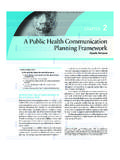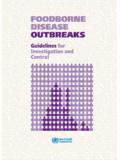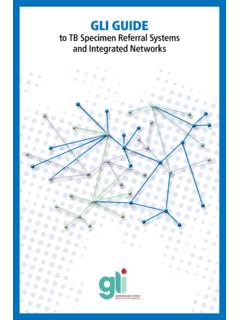Transcription of FAO/WHO framework for developing national food safety ...
1 FAO/WHO framework for developing national food safety emergency response plans FAO/WHO framework for developing national food safety emergency response plans Food and Agriculture organization of the United Nations and world health organization Rome 2010. The designations employed and the presentation of material in this information product do not imply the expression of any opinion whatsoever on the part of the Food and Agriculture organization of the United Nations or of the world health organization concerning the legal or development status of any country, territory, city or area or of its authorities, or concerning the delimitation of its frontiers or boundaries.
2 The mention of specific companies or products of manufacturers, whether or not these have been patented, does not imply that these have been endorsed or recommended by FAO or WHO in preference to others of a similar nature that are not mentioned. All reasonable precautions have been taken by the world health organization and the Food and Agriculture organization of the United Nations to verify the information contained in this publication. However, the published material is being distributed without warranty of any kind, either expressed or implied. The responsibility for the interpretation and use of the material lies with the reader.
3 In no event shall the world health organization or the Food and Agriculture organization of the United Nations be liable for damages arising from its use. This report contains the collective views of an international group of experts and does not necessarily represent the decisions or the stated policy of FAO or of WHO. Recommended citation: FAO/WHO [Food and Agriculture organization of the United Nations/ world health organization ]. 2010. FAO/WHO . framework for developing national Food safety Emergency Response Plans. Rome. 24 pp. All rights reserved. Reproduction and dissemination of material in this information product for educational or other non-commercial purposes are authorized without any prior written permission from the copyright holders provided the source is fully acknowledged.
4 Reproduction of material in this information product for resale or other commercial purposes is prohibited without written permission of the copyright holders. Applications for such permission should be addressed to the Chief, Electronic Publishing Policy and Support Branch, Communication Division, Food and Agriculture organization of the United Nations, Viale delle Terme di Caracalla, 00153 Rome, Italy, or by e-mail to or to WHO Press, world health organization , 20 Avenue Appia, 1211. Geneva 27, Switzerland, by facsimile to +41 22 7914806, or by e-mail to ISBN 978 92 4 150035 7 (NLM classification: WA 701).
5 ISBN 978 92 5 106612 6 (FAO). FAO and WHO, 2010. For further information on the joint FAO/WHO activities, please contact: Nutrition and Consumer Protection Division Food and Agriculture organization of the United Nations Viale delle Terme di Caracalla, 00153 Rome, Italy Fax: +39 06 57054593. E-mail: Web site: or Department of Food safety and Zoonoses world health organization 20, Avenue Appia, 1211 Geneva 27, Switzerland Fax: +41 22 7914807. E-mail: Web site: Table of content Aknowledgement .. 4. Acronyms .. 4. 1. Introduction .. 7. Background .. 7. Purpose of the document.
6 7. Target audience .. 7. Scope of the document .. 8. How to use the document .. 8. 2. Defining food safety emergency .. 9. 3. Preliminary steps .. 11. Step 1. Obtain high-level support .. 11. Step 2. Identify key partners .. 11. Step 3. Establish a planning group .. 12 4. Key considerations .. 13. General considerations .. 13. Country-specific considerations .. 14. 5. Key elements of an emergency response plan .. 15. Essential background information .. 15. Incident identification .. 17. Incident management .. 18. Post-incident review and evaluation .. 19. Communication.
7 20. 23. FAO/WHO framework for developing national food safety emergency response plans 3. Acknowledgements FAO/WHO would like to express its appreciation to the many people who provided advice and guidance during the preparation of this document. This document was prepared for FAO and WHO and is the result of the joint effort of many contributors. The development of the document was coordinated by Jean-Michel Poirson (FAO), Masami Takeuchi (FAO), Andrea Ellis (WHO) and Guansheng Ma (WHO). FAO/WHO is grateful to the international experts who participated in the drafting workshop, namely Andrea Gervelmeyer (EFSA), Maria Eduarda de Serra Machado (Brazil), Jeffrey Moon (EFSA), Ellen F.
8 Morrison (US FDA), Alan Reilly (FSAI, Ireland), Jongkolnee Vithayarungruangsri (Thailand), Elizabeth Haydee Segovia Lizarbe (Peru) and Guy Czerwinski (France). The document was peer-reviewed by Junshi Chen (China), Nour Elsabeth (France), Laurence Giuliani (France), Delia Grace (Kenya), Jack Guzewich (US. FDA), Philippe Houdart (Belgium) and Kumnuan Ungchusak (Thailand) and edited by Sarah Binns. Technical contributions from several FAO and WHO colleagues are also gratefully appreciated. 4 FAO/WHO framework for developing national food safety emergency response plans Acronyms CIFOR United States Council to Improve Foodborne Outbreak Response EFSA European Food safety Authority EMPRES Food safety Emergency Prevention System for Food safety FAO Food and Agriculture organization of the United Nations FDA United States Food and Drug Administration FSA United Kingdom Food Standards Agency FSAI Food safety Authority of Ireland IHR International health Regulations INFOSAN International Food safety Authorities Network MACG Multiagency coordination group
9 NASDA United States national Association of State Departments of Agriculture SPS Sanitary and Phytosanitary WHO world health organization FAO/WHO framework for developing national food safety emergency response plans 5. 1. Introduction Background Many member states have requested that FAO and WHO provide technical assistance in the development of food safety emergency response plans. Reinforcing preparedness, and recognizing and responding rapidly to food safety emergencies are key elements of the food safety emergency-related programmes of FAO and WHO, namely the Emergency Prevention System for Food safety (EMPRES Food safety ).
10 And the International Food safety Authorities Network (INFOSAN). Several countries, most with well developed food control systems, have prepared response plans to document their actions during an emergency. However, there is currently no guidance that documents the best practices to use during the process of developing such plans, or what the plans should contain. The management of food safety emergencies is rarely the responsibility of a single national authority, and timely and coordinated collaboration among all partners is required to ensure an effective response.

















